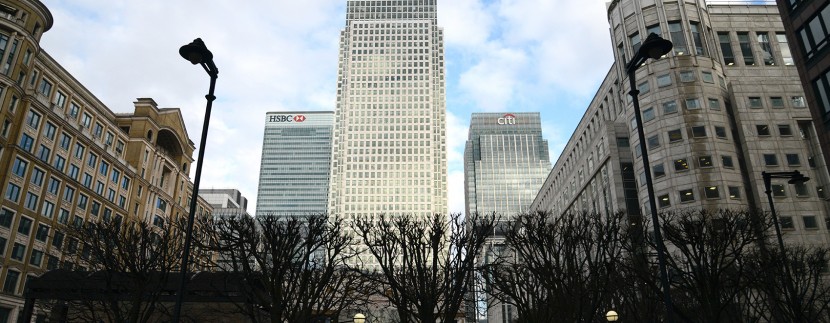London, we´re coming

London, we´re coming
A city full with charm and drizzles, let us take you today on a quick tour to look at this world class city’s real estate market.
Being one of the most expensive cities to live in in the world, most prospective homebuyers in London would easily fall in the top 10 percent of the income distribution. And it comes as no surprise as the average down payment/deposit needed for one property is usually more than £50,000, that is not to mention the controversial stamp duty bill which would typically amount to more than £14,000. Based on this i.e. a 10% deposit and tax payable, it is estimated that the average first time buyer in the city would take around 10 years to save up for an average home in London.
What is then the average annual salary in London, you may ask? £35,000
Average amount on income tax? £4,700
And the average London house price? £484,000
Tax i.e. Stamp duty payable for an average property? £14,200
Despite these numbers, the number of first-time buyers in Great Britain hit a high in 2017, the highest number since 2006. More first-time buyers took out mortgages than in any year in a decade. Do note however, that we’re specifying the numbers only for first-time buyers here. And a big factor contributing to that could simply be the government’s new rules targeting first time buyers for the stamp duty tax.
What is Stamp duty? This is the tax amount you pay when buying a residential property e.g. a house or a flat in Britain. The rate payable has been overall increasing at a dramatic rate in the past decade, and it is a major source of income for the government. However, last year, in a measure to help young buyers own a property, the government has announced an abolition on stamp duty for all properties up till £300,000 for first time buyers to address the housing crisis.*
The number of people aged 25-34 who own their own homes fell from 59% to 37% between 2004 and 2015.*
To give you a clearer picture, here is the explanation from www.gov.uk on Stamp Duty Land Tax :
Rates if you’re buying your first home
You can claim a discount (relief) so you don’t pay any tax up to £300,000 and only 5% on the portion from £300,001 to £500,000.
You’re eligible for this if:
-
you, and anyone else you’re buying with, are first-time buyers
-
you complete your purchase on or after 22 November 2017
If the price of the property is over £500,000, you follow the rules for people who’ve bought a home before.
SDLT rates if you’ve bought a home before
Up to £125,000 – 0
The next £125,000 (the portion from £125,001 to £250,000) – 2%
The next £675,000 (the portion from £250,001 to £925,000) – 5%
The next £575,000 (the portion from £925,001 to £1.5million) – 10%
The remaining amount (the portion above £1.5million) – 12%
Example: If you buy a house for £275,000, the SDLT you owe is calculated as follows:
-
0% on the first £125,000 = £0
-
2% on the next £125,000 = £2,500
-
5% on the final £25,000 = £1,250
-
Total SDLT= £3,750
And this is on the middle-lower end side of the property market, in large parts of London and the South East, where family home can easily cost £700,000 or more- a stamp duty bill would easily amount to £25,000.
Do note that if the property you buy ends up meaning you’ll be owning more than one, then you are required to pay an extra 3% on top of these rates.
And so apart from the rise of first-time buyers due to the tax break, which analysts believe have also contributed to the pushing up of property prices that we’ve seen early in 2018, demand in the property market for all the others have been resilient. This is due to a few factors such as the higher rates of stamp duty, stricter regulations for landlords along with Brexit and the uncertainty over the prospects for price growth or declines in the market.
In response to this, a growing number of wealthy people are also putting off their home purchases and choosing to rent instead in order to avoid the hefty tax bills and tide out market uncertainties. In 2017, 137 leases for London’s super prime properties were signed for a weekly rate of £5,000, with the average length of leases being 589 days. Additionally, 20 leases of £15,000 and more per week took place last year as well, a number that has almost doubled from 2016.
The number of foreign buyers investing in high-end and new-build London properties have also fallen over the past year from 44% in 2016 to 35% in 2017.
Property data experts Moilor says ‘more than half of the 1,900 ultra luxury apartments built in London last year failed to sell, raising fears that the capital will be left with dozen of “posh ghost towers”.’
Henry Pryor, a property agent also mentioned that luxury multi-million properties were built as “gambling chips for rich overseas investors, but they are losing interest in the London Casino and have moved on.”
A prime example of this would be the collection of £50m apartments at the top of the Shard, all 10 of which remain unsold five years after they were first put on the market, although many have point to the fact that the rich people simple don’t want to live south of the river. Again, we see how location can really make or break a project no matter how glamorous it is.
Despite this, there is still a shortage of housing in the capital and the government has set a target this year to build 300,000 homes every year in the country.
Considering this, we’ve done a quick research in the construction and building industry of Britain. There still seems to be a shortage of skilled workers for small and medium sized companies, and considering that most of them are migrants, following the Brexit news, the market seems to be stuck in chaos and confusion. While there is a high demand for house renovation, bureaucracy is an issue, companies cannot avoid certificates and licenses on top of a planning permission whether it is to build something new, make a change to the building e.g. building an extension, change the use of the building and etc.
Although not required, after major news of the lack of quality in new-homes being built by large companies, public and private clients are now demanding the Construction Skills Certification Scheme (CSCS) card which acts as a proof of skills and qualifications and is used in order to maintain a healthy and safety standard.
Upon buying a property, people are also advised to invest in a full building survey report which will reveal details of the construction of the property, the materials used, structural standing and etc in order to know exactly if its going to be worth their loan.
As interesting and chaotic as it all sounds, we hope we’ve managed to paint a clearer picture of the current housing market in London and Britain for you, as this is also a bit of research to prepare ourselves for our trip and participation at the Ecobuild 2018 conference as well.
Wishing you a lovely day,
wohnraumbitzer.de
References:
EU workers in London_2014-16 Labour Force Survey_GLA
____
1. Contents of the website
All content provided on this blog is for informational purposes only. The owner of this blog makes no representations as to the accuracy or completeness of any information on this site or found by following any link on this site. The owner will not be liable for any errors or omissions in this information nor for the availability of this information. The owner will not be liable for any losses, injuries, or damages from the display or use of this information.
The contents of this website were written with due diligence and by the author’s best knowledge. We can be held liable only by general laws, especially for our own contents acc. § 7 TMG (German law on tele-media) and for external contents acc. §§ 8 – 10 TMG. As a Provider of tele-media we can be held liable for external contents only once we have knowledge of a concrete infringement of law. We reserve the right to change or delete contents of this webpage which are not subject to any contractual obligation.
2. Links on external Websites
Contents of external websites on which we are linking direct or indirect (through „hyperlinks“ or „deeplinks“) are beyond our responsibility and are not adopted as our own content. When the links were published, we didn’t have knowledge of any illegal activities or contents on these websites. Since we do not have any control on the contents of these websites, we distance ourselves from all contents of all linked websites, which were updated after the setting of the links. For all contents and especially damages, resulting of the use of the linked websites, only the provider of these linked websites can be held liable. If we receive knowledge of illegal contents on these linked websites, we will delete the according links.
3. Intellectual property rights
All content of this website, especially texts, pictures, images, graphical presentations, music, trademarks, brands and so forth, are subject to copyright laws. The use, reproduction and so on are subject to the individual rights of the respective owner of the copyright or administrator of these rights. If you want to use such content, please let us know and we will establish contact with the respective owner/administrator.
